Emerging Designers Who Are Toppling The Status Quo
We’ve rounded up a few of the best and brightest young artists
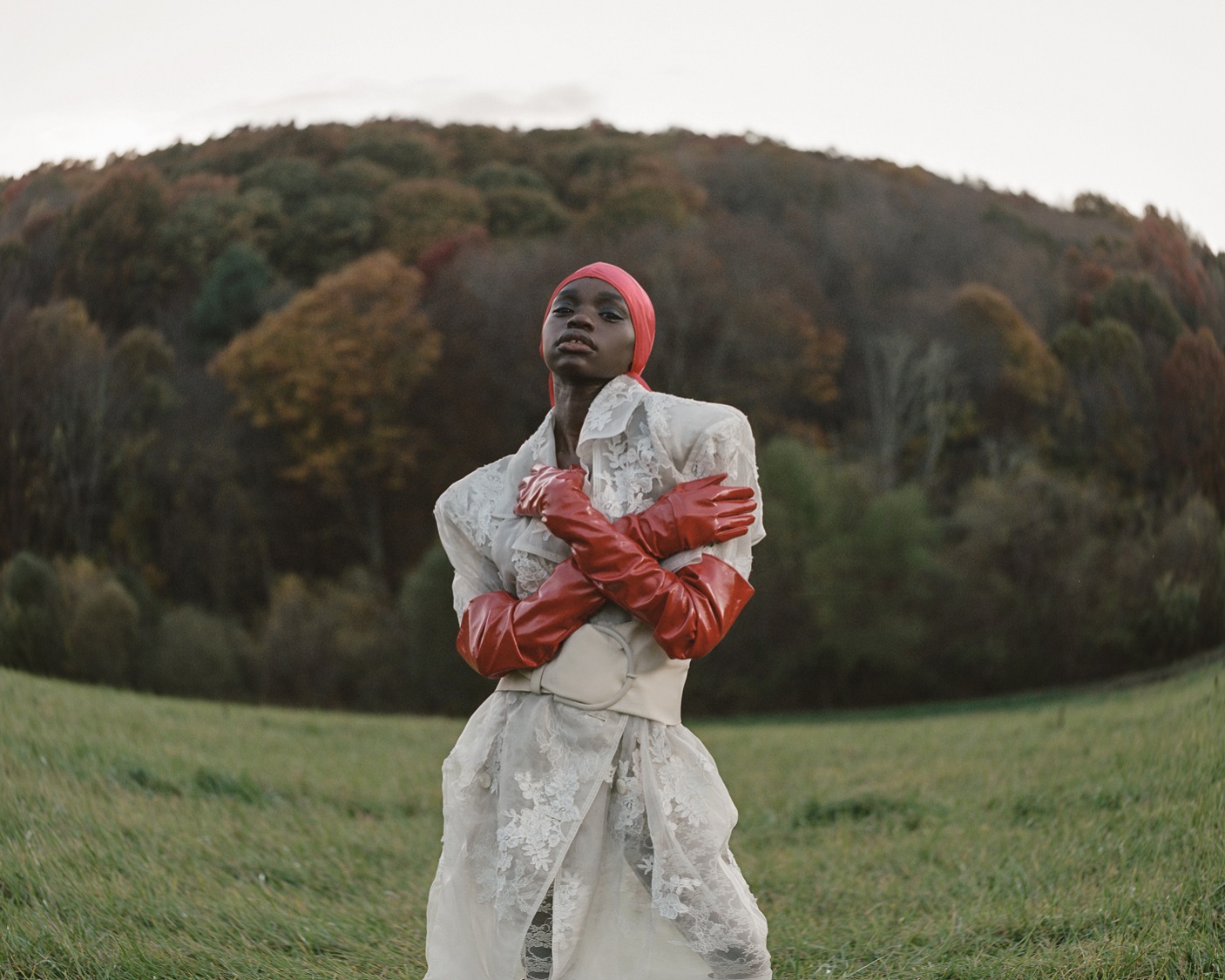
Between the glamour of fashion week and the allure of high-gloss magazines, it’s easy to get caught up in the work of long-time, big-name designers. Gucci is releasing an entire film series directed by Gus Van Sant. Chanel has a revolving door of celebrities in their delicately constructed tweed. It wouldn’t be difficult or unpleasant to stick with the establishment, at the expense of all that’s new and young, but what a world of delight you would be missing!
We decided to chat with some of the best and brightest in the fashion freshman class, an enviable list of young designers whose names may become increasingly familiar to you over the next few years. They told us about their work, their advice for up-and-comers, and their thoughts on the future of the industry. Exquisitely captured by the lens of photographer Chrisean Rose, take a look at the work being done outside the status quo.
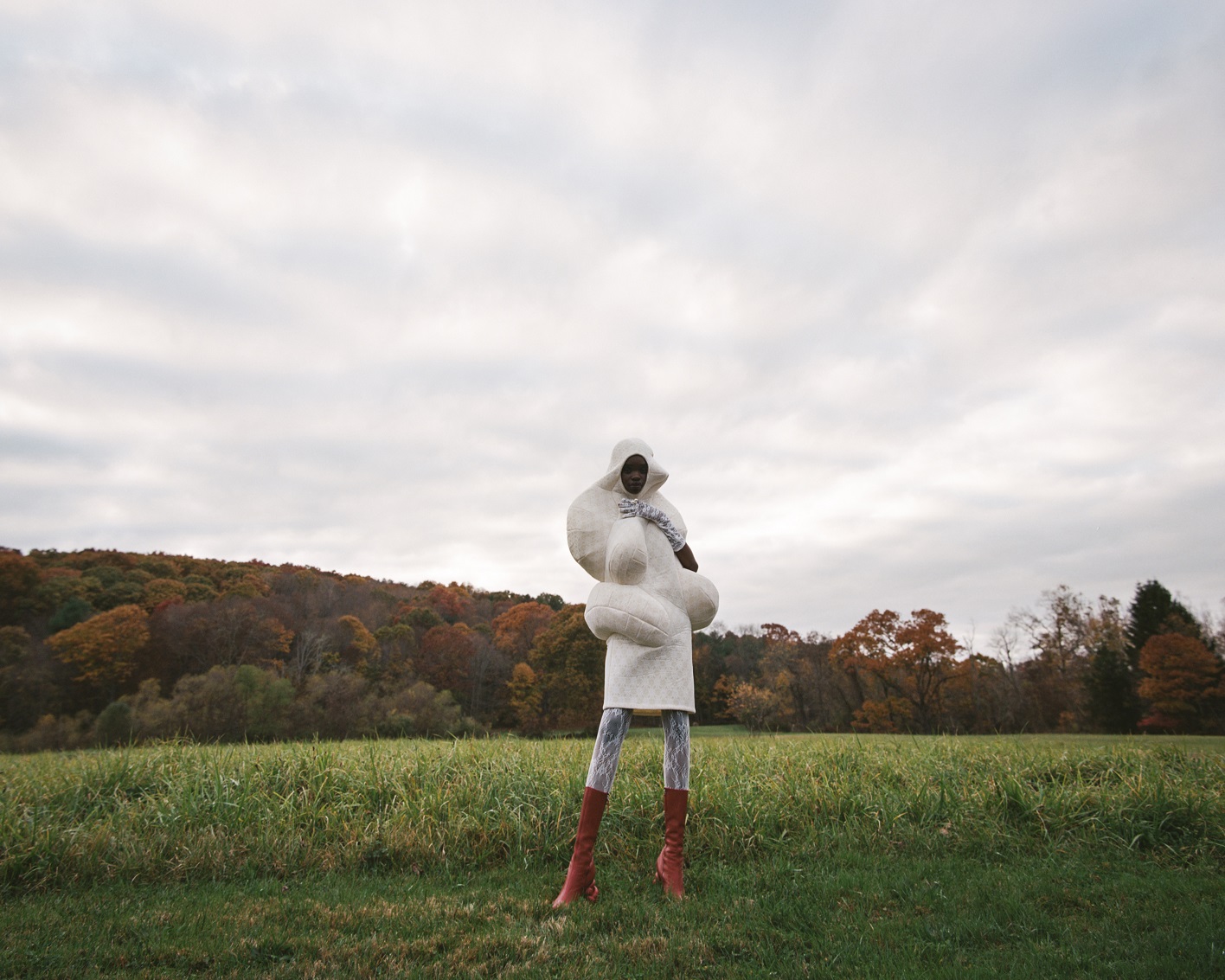
Amina Saada
This young designer is toeing the line between sculpture and fashion. Amina Saada, a Master’s student in fashion, clothing and textile design, created a collection titled “Wearable Sculptures” that transforms the body of models into something bulbous and unique.
“I try to find/invent new ways for creating clothes,” said Saada. “The methods should make the process easier and allow the maker to be freer with their creativity, and not think about the implementation too much. When I have figured that out, I create a story that I want to dress. Storytelling is my thing and I take inspiration from that. For example, this collection: It is about a girl that is transitioning to a woman. She is put to a cocoon stage and when she has hatched, she will be the monster’s bride. I love for all of my collections to have this cinematic feel to them.”
Saada’s garments draw inspiration from a wide variety of sources including 1960’s wedding and mourning dresses, YSL’s “The Cocoon Dress” (1965), the movie The Bride of Frankenstein (1935), and even the shape of garlic.
“I took a course that was about mold making using plaster, clay, silicone, and resin,” she said. “I had forgotten how fun it was to create and shape clay and I wanted to use it somehow as a technique in my collection. I had the idea to use clay as a shaping tool instead of fabric. First, to just try out the technique, I took a Barbie and I shaped dresses on it. For me, it was easy and fun and I thought that it could really work if I continued the technique on a 1/2 size dummy. I made a head, upper arms and a stand to represent legs. Then, I put clay and shaped it to a dress that I preferred. When I was happy about the allover look, I drew the seam lines on the clay. The final step was to copy the pieces on paper using a pen and tape. I made a small prototype to see if the patterns were okay. After that I digitized the patterns and made them 200% bigger to fit the 1/1 size. So those shapes that you can see on my collection they were only made with this technique.”
Tabitha Ringwood
As a bespoke footwear designer, Tabitha Ringwood is on an ever-evolving hunt for communicative, emotive, and meaningful design. In each piece of work made, she explores “personal narratives through tactile, ‘squeezable’ uppers.” And whenever she can, she’ll opt for designs that allow for zero-waste pattern cutting.
Experience with some of the best well-known brands in the fast-paced footwear industry has taught Tabitha what not to do, especially in regards to mass production. “Having observed this level of environmental damage first-hand, I was convinced that change was desperately needed. Designing and making in what I hope is the ‘right way’ is the foundation of my practice.” And since Tabitha is not bound by conventional ways of thinking; neither is her shoe designs. “I endeavor to not categorize my styles too much by ‘season.’ I often repeat styles or colour ways from one collection to the next as it’s important for me that my work is not trend-driven; they’re pieces crafted to love and invest in,” she explained. Her boots, sandals, and heels are of editorial status.
Reflecting on the progress seen in the industry thus far, the designer notes, “I think we are seeing a shift in our thinking towards fast fashion and we are being asked to question: what do we value as individuals?” To continue this growth, however, she adds, “We need to be intrigued by an object’s design, its origin; we need to understand the meaning of its creation and the journey it has taken to reach our hands. From both the consumer and designer perspective, she “sees that people are hopeful for a future in fashion that cares… with transparent processes from the start to the finish.”
Her advice for upcoming designers is eloquently stated. “When you design something from the heart, you’re creating something authentic. I don’t see how anything authentic could be deemed unsuccessful, whichever form this takes, your consumer and followers will see this, and will want to join you on your journey. The little wins accumulate.”
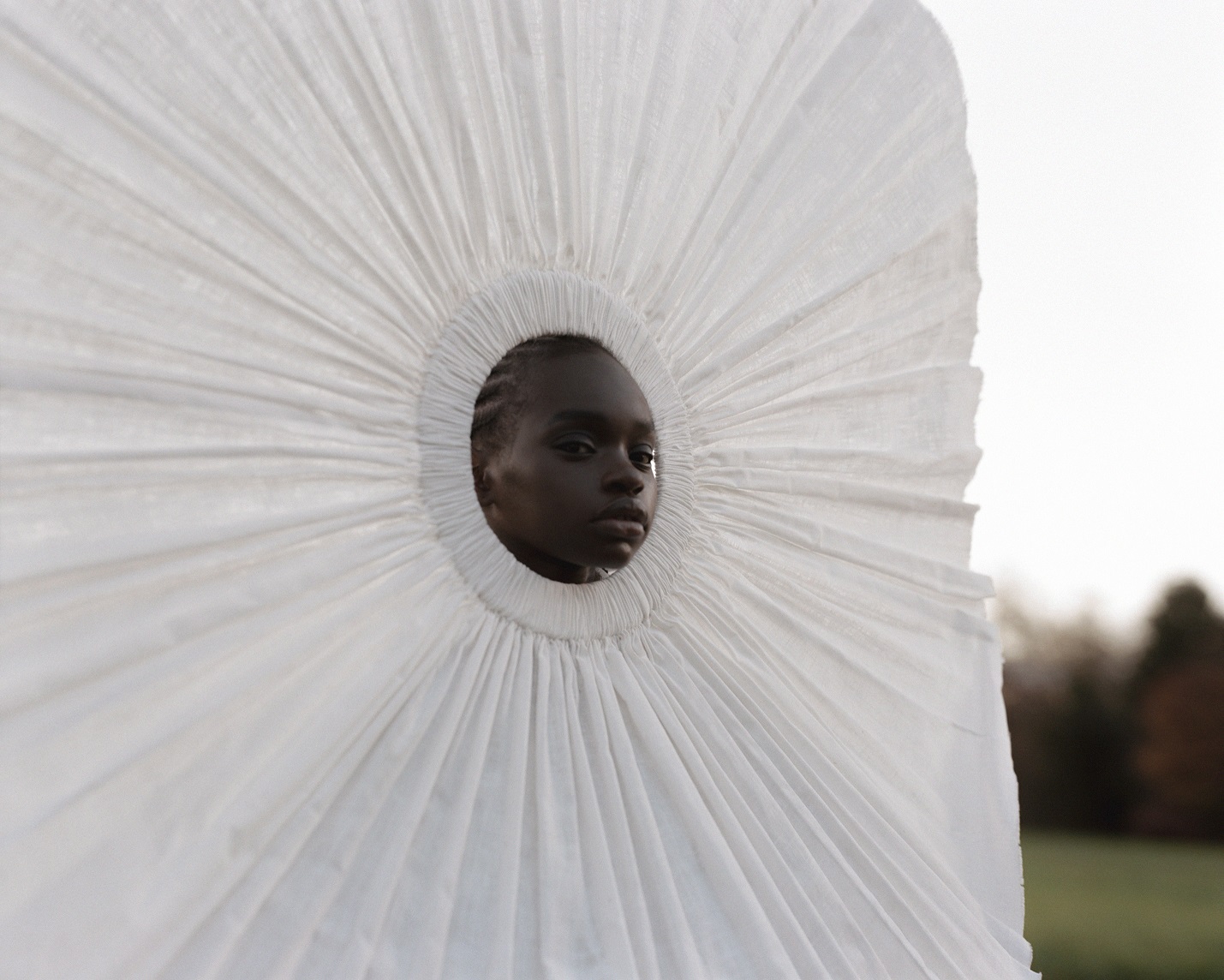
MARCO
“Life is a circle,” says Paris-based designer MARCO. The large, circular garments MARCO creates draw attention to different parts of the model’s figure: the breasts, the face, the butt, the arm.
“The circle is one of those shapes I’ve always been drawn to and [it] has become core to my collections,” said the designer. “It’s so simple and graphic but at the same [time] complex. It has a sense of naturality about it – feeling organic and industrial at the same time. Conceptually the circle symbolizes a lot of things. Life is all about cycles, life to death. We have cycles of emotions, and events, in our own lives and with others’ too. It’s a bit cliché, but it really is true for me. Without an obvious start or end the circle makes you stop and have to think about the current moment, something I think is very relevant in our current time.”
MARCO uses bold, bright colors to disrupt the environment surrounding his work. He said he also draws inspiration from Hélio Oiticica, the Brazilian performance artist, and in particular his performance ‘The Parangolés,” which includes the line “Objects only come truly alive through the movements of the people who wear them.”
Speaking to the climate in which his work is being received, MARCO said, “I feel that society needs to re-engage with its humanity; celebrate and respect diversity, and ensure greater representation. To some extent, there has been a big shift in the fashion industry following COVID and the Black Lives Matter movement. Questions of representation and sustainability have never been so omnipresent. But fashion still has work to do. We need to become more discerning as creatives and consumers to move faster and more substantially towards actual sustainability. The Industry needs to develop black creative and intellectual potential in all areas and positions, and not just show performative diversity through casting or fetishized views of black beauty.”
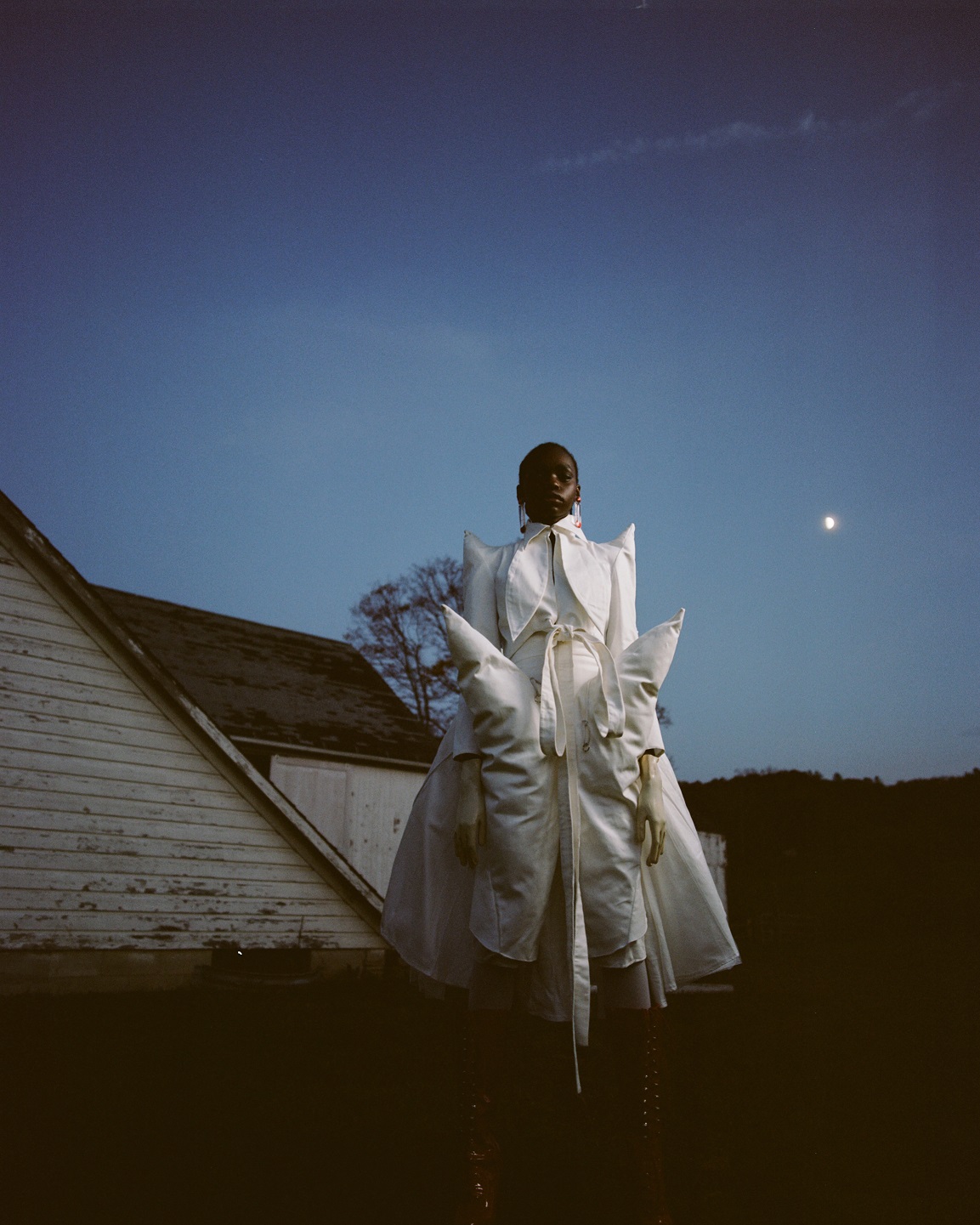
KOSMAS
Through art, Kosmas tells the story of the destruction of Smyrna, as explained in the “Rebetika,” a genre of Greek classical folk music, as well as the life of Roman Emperor Heliogabalus, who “famously married one of the most beautiful men of Ancient Smyrna, Zoticus.”
“Merging the stories of pain, loss, and longing found in the songs of the Greek immigrants whose homes and lives had been destroyed overnight, with the brutality and overpowering feeling of lust that characterizes the life the Roman Emperor, I wanted to create a “thorny flower”, a tender but never the less aggressive specimen of beauty, wrapped up in a veil of dawn’s mist,” said Kosmas.
The artist’s pointed and sculptural gown strikes a poignant silhouette in all white drapery. Kosmas has a penchant for narrative-based work, enjoying the process of how idea’s come to fruition almost more than the finished product itself.
Speaking about the current state of design Kosmas said, “Sadly, if any kind of emotion is to characterize our generation of makers it would be bitterness and sheer disappointment towards the creative industries and establishments, both mainstream and otherwise. All hope has been sacrificed to the altar of the divine rebellion that is so often associated with the golden decades of Art and Fashion. I’d rather steer away from commonplace critics on the evolution of a system that I haven’t been a part of for that long to begin with, that is to say, if I even am now, and choose to be hopeful for the future.
“We live in a world of endless possibilities and it’s important to remember that now, maybe more than ever before, the opportunity for one to establish oneself creatively in an independent, self-driven and authentic way is no longer that farfetched. Fashion thrives in diversity of expression, and although at times the over-saturation and over-exposure of the creative industries is indeed a potentially detrimental threat to a seemingly well-oiled machine, one must remain vigilant in the pursuit of individuality amongst the chaos of Instagram posts and cheesy YouTube ‘reviews’ and put oneself out there!”
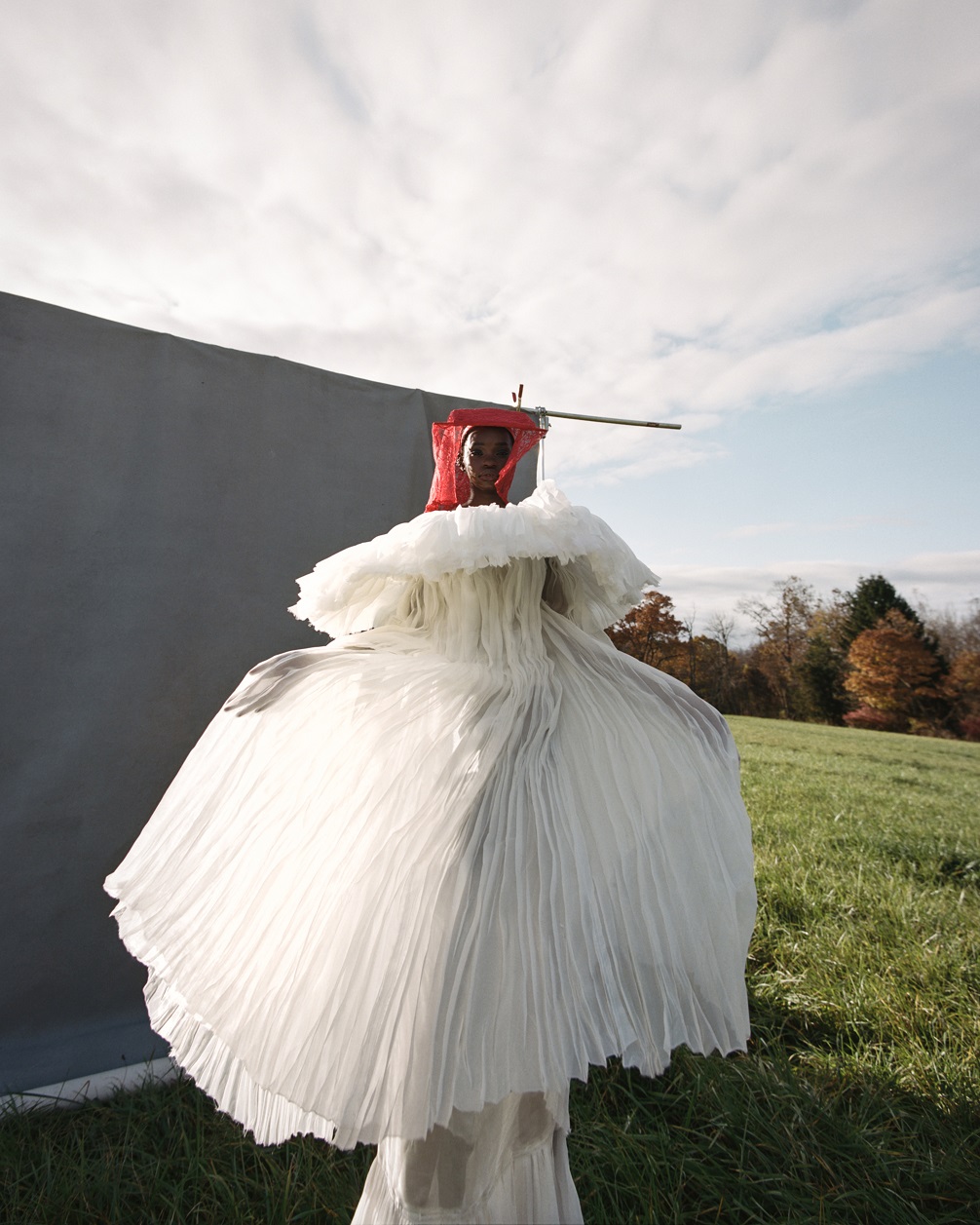
Aunt Sister
Zo V. Fielder, the creative force behind Aunt Sister is fresh out of Parsons School of Design and already on her way to having a successful line of clothing. Her delicate designs embody a celebration of life.
“Two important points of advice that have helped my work: Trust your gut enough to roll with the creative decisions that you believe in, and also, be open to VALID criticism,” said the designer. “Sometimes, we are worried about how we feel about our own art, while also feeling the looming opinions of the masses, especially in today’s consumer climate. Now, I will say that sometimes it’s good to completely ignore what folks have to say about your work and trust your creative process, especially when you’re trying to define your design aesthetics. But also, every now and then we need to discern the valid criticism amongst the sea of opinions, and consider them while we create.”
The fashion industry has evolved a great deal in recent years, especially when it comes to the inclusion of diverse voices and bodies. Still, Fielder says there is a lot of work left to be done.
“I believe that the industry holds itself back in so many ways in regards to environmental practices, ethics, and still representation. The world that we live in, and the systems we live by, are continuously changing, and in order to keep up, the fashion industry also needs to be ever-changing in practices and in attitudes. We are still one of the largest contributors to climate change. Alongside climate change, cheap and exploitative labor is used today as well, and during the pandemic, factory workers for fast fashion & bigger named brands have been affected the hardest by the industry shut down, with little regard for them. Western consumer culture and overconsumption are directly related to these major issues, and there are companies that use greenwashing to cover their practices up. Exploitive labor and discriminatory practices are also apparent in fashion publication, in unpaid internships, and unfortunately, STILL come up a lot when underrepresented members of the industry vocalize their experiences. Also, let’s not forget that there are members of the fashion industry that use their jobs as a means to prey on & take advantage of individuals that are usually at a systematic disadvantage. The modeling community has thankfully been vocal about this, but it’s unfortunate that it took the industry so long to start taking allegations seriously…all of these issues are actually connected to one another like a web. They do not exist without influencing one another.”
J.R. Malpere
Artist and headwear designer J.R. Malpere creates all of his work by hand. Featured here is a piece titled “Morning” from his recent millinery series titled “Temperence,” a reflection of the pandemic times we’re currently living through.
“[Morning] is made of lace, satin, and a hand-painted dowel on a headband. I named it “Morning” after that moment we wake up from sleep. We truly are in the present moment. For me, the morning is so peaceful and quiet. I love it,” said Malpere.
Despite being early in his career, Malpere’s work has been featured in the pages of international copies of Vogue, Elle, and Harper’s Bazaar. His headwear has been worn by the likes of Zendaya and Kylie Jenner.
“My advice would be for [young designers] to decide what it is they want to market, who they want their audience to be. They should put their brand out there, create a website for themselves. They do not have to put a lot of money into it — something simple and straight forward to show their product is fine. They should also put their brand on social media platforms. Be visible, and be observant of the world around them. See what it is that their audience wants, then put their creativity into it. When they get clients, listen to them. Be a good listener. They should surround themselves with people that support them and their brand, and be that support for them as well. But the most important thing is to not ever let anyone tell you cannot do it; believe in yourself and your brand. Never get discouraged. A friend once shared the advice of her father: ‘There is an ass for every seat.’ It is true. There is someone out there who needs their product. If they believe they will find those people, they will! Never give up.”
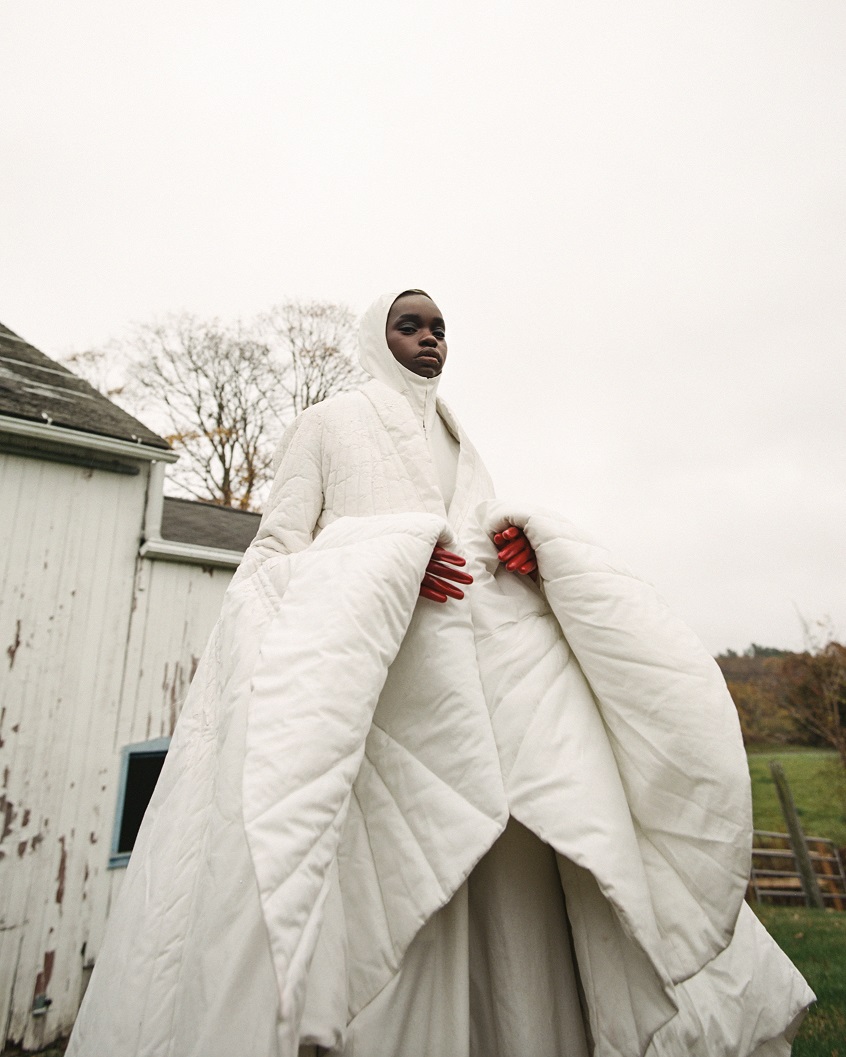
Isabella Smith
Designer Isabella Smith is in her final year at the prestigious Central Saint Martins and has already landed internships at the likes of Givenchy and Margiela. The look featured here was inspired by stories of her father’s time at convent school in the 60s. The tales led to a fascination on Smith’s part with religious vestments and habits.
“The nature of this strong sacrificial devotion was really beautiful and interesting to me as someone who isn’t personally religious,” said Smith. “The jacket is partially covered in plaster, almost turning the wearer into a statue or idolic figure. This and the extreme volume on the sleeves adds so much weight, encouraging the wearer to clasp their hands together as if in prayer. In [my work], I am really looking at deconstructing and redefining the idea of modern glamour through a more undone, almost jagged lens. To me, glamour is something that acts as a personally constructed aura that is a projection of the self, amplifying the image we want to create whilst acting as a protective shell wrapping itself around the body to shield us from being invisible.”
Working through the pandemic, Smith encourages resourcefulness and pragmatism as key attributes that will help other young designers succeed. Another item central to the immediate future of fashion? Sustainability.
“The fashion industry is evolving but as young designers, we need to play our part in continuing to push the status quo both in terms of creativity but also in a more sustainable way of working. As consumers of fashion, we need to value things more and consume things less, and I think we are really seeing the industry start to evolve as people are questioning their role in the fast fashion cycle. Everyone has got something to bring to the table and this needs to be reflected in the funding of small brands in the industry. This is really important in today’s economic climate when some brands are really struggling and it’s a difficult time for young designers to start their own brands – the fashion industry needs a constant flow of ideas from young designers to keep it fresh and relevant, so things like mentoring, sponsorship and targeted funding are what people need at this time to survive.”
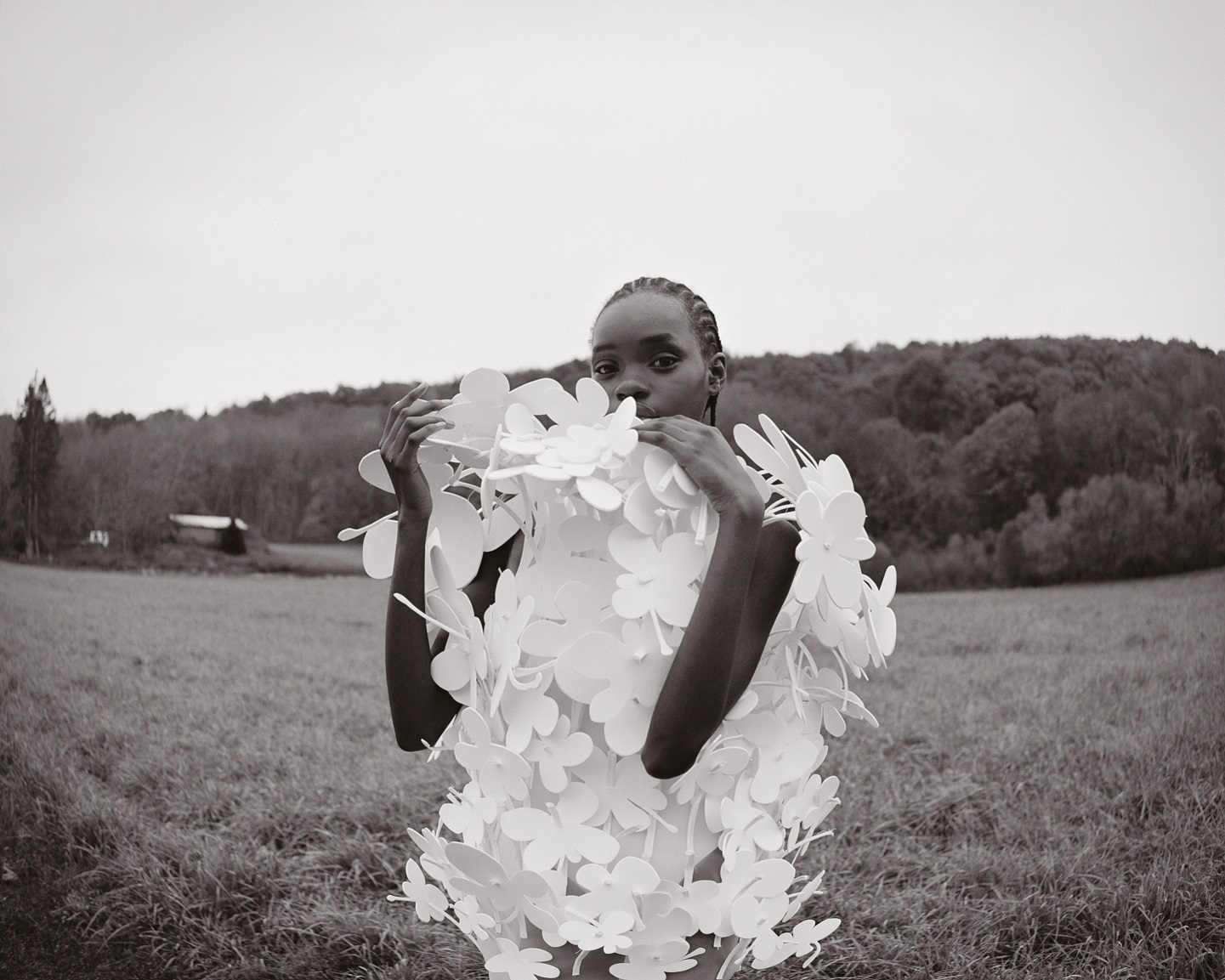
Melitta Baumeister
Another graduate of Parson’s, this German designer and her team have been persevering through lockdown, creating something joyful in spite of the harsh reality.
“We decided to oppose the situation with positivity and create pieces that reinstate our love for garments and let us dream,” said Baumeister. “This season was the first one to have a working title. ‘Domestic Surreal,’ refers to the moment when your home becomes so familiar that it starts turning awkward and surprising again, just like saying a word out loud over and over and noticing its awkwardness once it disconnects from its meaning. We tried to create a floating silhouette, one that moves and changes with every step. Dreaming of being in nature, strolling over windy meadows, floating through the days.”
Her luxurious, floral garments turn models into walking gardens, seen here in a stark and dazzling white. Now residing in New York, though it is perhaps not the capital of lush greenery, Baumeister has had a chance to reflect on the industry both locally and abroad.
“A disruption in any system can speed up the acceptance of long-overdue changes and embracing of new ideas. To prove one’s resilience, we need to accept our vulnerability, which is never an enjoyable position to be put in, but it is crucial. I’m glad to finally see a big rise in awareness for environmental and social sustainability. We all have to keep the momentum, rethink our intentions and put more effort and thought into the products we are creating. As a brand, we were reminded of how lucky we are to have made long-lasting relationships to be able to produce our entire collection locally in New York. Supporting the industry that once made this city great, profiting from its long history and incredible talent, as well as staying agile. This way we are not overproducing, not shipping our garments back and forth over the globe, and we can guarantee the highest quality to support longevity. And, we can always jump on the bicycle to bring a few patterns over.”
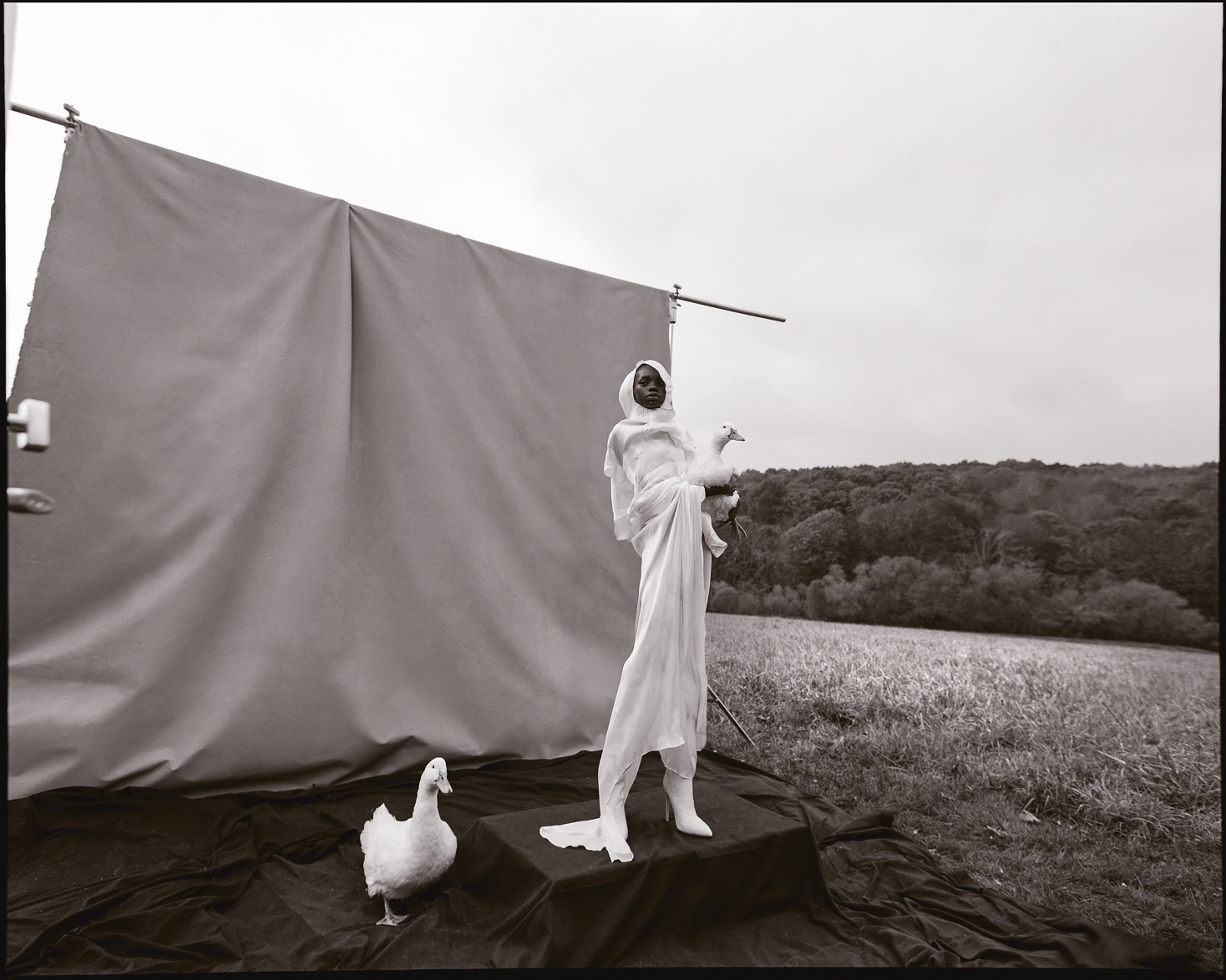
Mingshan Mai
Mingshan Mai, in his 2019 collection “The Wandering Space,” explores topics that bridge real-world experiences, fashion, and literature. The project explored inner tranquility and sought to create a personal space for one to relax, separate from the world and society surrounding them. Mai calls each garment an “interactive room.”
“The initial trigger for starting this collection is my personal experience and Observations on the “now”, the modern society,” said Mai. “Against the background of a faster and more competitive society, human beings are suffering greater pressure than before. We can hardly escape from pain or negative moods due to our endless pursuit.”
He quotes Arthur Schopenhauer as a source of inspiration. “If there is no final end of striving, there is no measure and end of suffering,” (The World as Will and Representation).
“By the time I started working on this collection, many of my friends had experienced various levels of psychological issues. From anxiety to major depression, the contemporary prevalence rate of mental illness is rising much more rapidly than decades before. As a result, I focused my attention on this distressing reality of inveterately social pressuring.”
Another quote of inspiration is from The Book of Disquiet by Fernando Pessoa. “I’d like to run away, to flee from what I know./I want to set off, for anywhere that has the virtue/of not being here./I want a rest from my habitual pretending.”
“The creative process of mine can be considered as an exploration between understanding the real problems and looking for solution concepts to tackle the challenge,” said Mai. “Observing human behavior is simple, but synthesizing the reality behind all the behavior patterns requires much more research and thinking processes than observations alone…Wearing the [pieces in the collection are] a representation of the strategies which can be used to manage negative emotions.”

Danielle Frankel
Lovely in lace, bridal designer Danielle Frankel has been working out of her New York atelier to create unique and non-traditional garments. Shown here is a look from her Autumn 2020 show. “We were referencing ’90s, men’s trench coats and working with liquid organza and lace applique to offset the large shoulders and add a bit of sweetness to it,” said the designer.
Her team of eight cover every step of the process, from formulating an idea with a client, to getting the piece down the aisle. “Every person contributes to the development of a single garment. We have our pattern makers, sample makers, design and development staff, along with devoted interns who put in the work to make each style. We work with brides on a daily basis and have a huge responsibility in making their wedding gowns. We take a lot of pride in developing these styles.”
For designers still working towards having their own line, Frankel advises, “Be as creative and risk-taking as possible within reason so that your product stands out. Have purpose for every garment you produce and produce it really well.”
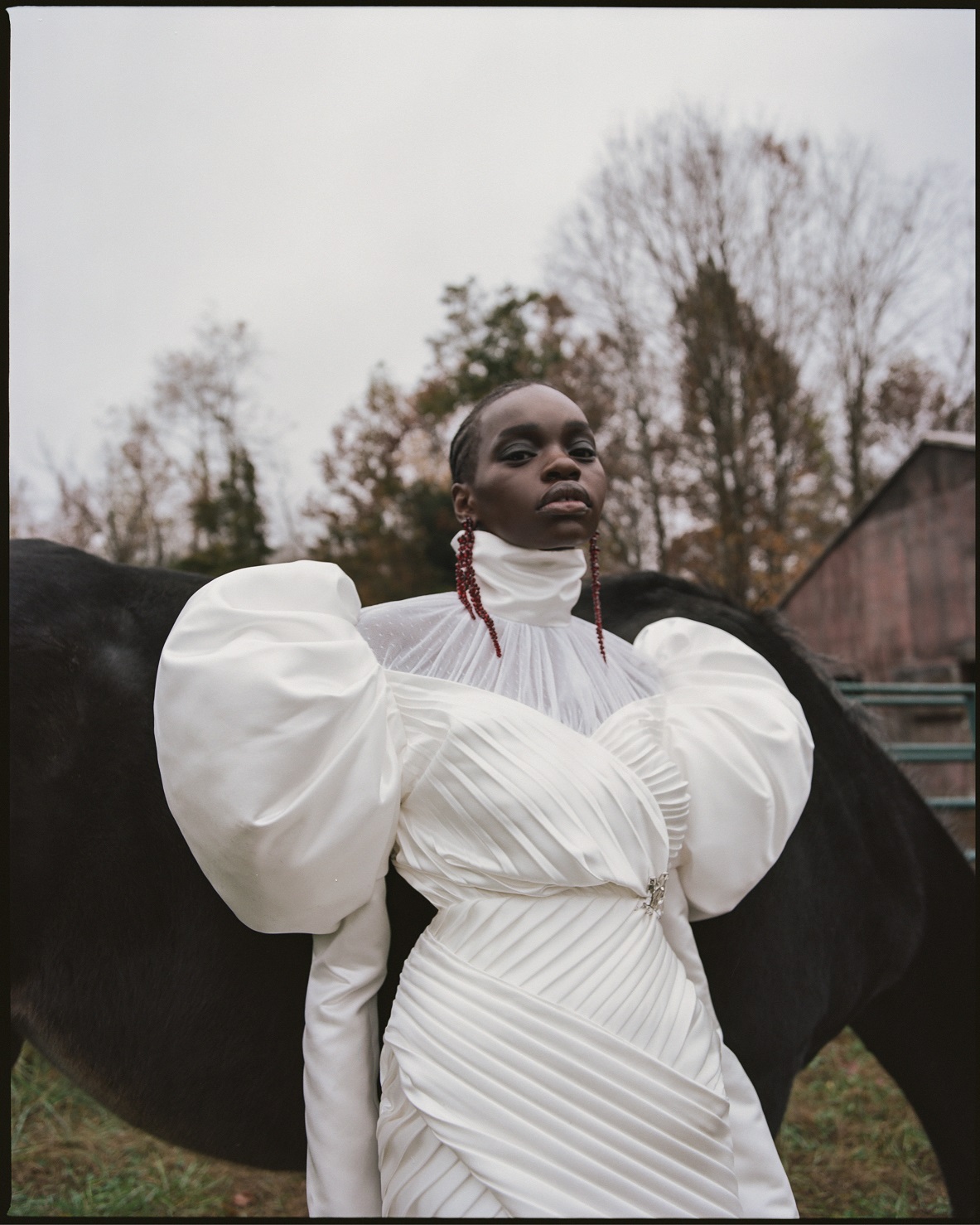
Richard Quinn
Discover More
